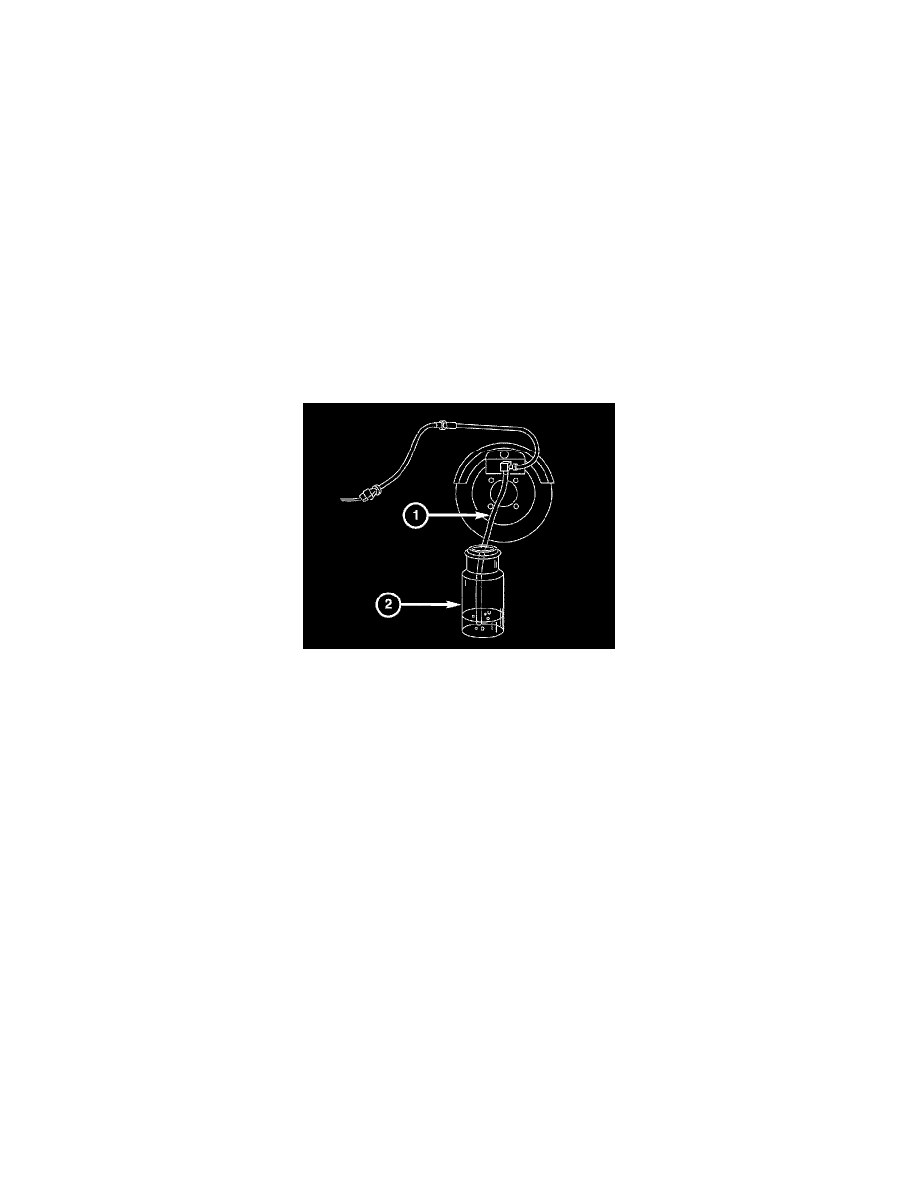Crossfire SRT-6 V6-3.2L SC VIN N (2005)

Brake Bleeding: Service and Repair
Base Brake System
STANDARD PROCEDURE - MANUAL BLEEDING
CAUTION: Do not spill brake fluid on any painted surface. Brake fluid can damage paint.
Use brake fluid approved to MB 331.0, such as Mopar part number 0454925AC, or a DOT 4 brake fluid with: minimum dry boiling point (ERBP)
500°F, minimum wet boiling point (WERBP) 356°F, maximum viscosity 1500 mm2/s, conforming to FMVSS 116 and ISO 4925.
DO NOT pump brake pedal at any time while bleeding. Air in the system will be compressed into small bubbles that are distributed throughout the
hydraulic system. This will make additional bleeding operations necessary.
DO NOT allow the master cylinder to run out of fluid during bleeding operations. An empty cylinder will allow additional air to be drawn into the
system. Check the cylinder fluid level frequently and add fluid as needed.
Bleed only one brake component at a time in the following sequence:
1. Fill the master cylinder reservoir with brake fluid.
2. Open the caliper bleed screws, and allow the brakes to gravity bleed. Then close each bleed screw as fluid starts to drip from it. Top off master
cylinder reservoir once more before proceeding.
3. Attach one end of the bleed hose (1) to the bleed screw and insert the opposite end in a glass container (2) partially filled with brake fluid. Be sure
the end of the bleed hose is immersed in the brake fluid.
4. Open up the bleeder screw, then have a helper press down on the brake pedal. Once the pedal is down, close the bleeder screw. Repeat bleeding
until fluid stream is clear and free of bubbles. Then move to the next wheel.
STANDARD PROCEDURE - PRESSURE BLEEDING
CAUTION: Do not spill brake fluid on any painted surface. Brake fluid can damage paint.
Use brake fluid approved to MB 331.0, such as Mopar part number 0454925AC, or a DOT 4 brake fluid with: minimum dry boiling point (ERBP)
500°F, minimum wet boiling point (WERBP) 356°F, maximum viscosity 1500 mm2/s, conforming to FMVSS 116 and ISO 4925.
DO NOT pump the brake pedal at any time while bleeding. Air in the system will be compressed into small bubbles that are distributed throughout the
hydraulic system. This will make additional bleeding operations necessary
DO NOT allow the master cylinder to run out of fluid during bleeding operations. An empty cylinder will allow additional air to be drawn into the
system. Check the cylinder fluid level frequently and add fluid as needed.
Follow the manufactures instructions carefully when using pressure equipment. DO NOT exceed the tank manufactures pressure recommendations.
Generally, a tank pressure of 51-67 kPa (15-20 psi) is sufficient for bleeding.
Fill the bleeder tank with recommended brake fluid and purge air from the tank lines before bleeding.
DO NOT pressure bleed without a proper master cylinder adapter. The wrong adapter can lead to leakage, or drawing air back into the system. Use an
adapter provided with the equipment.
